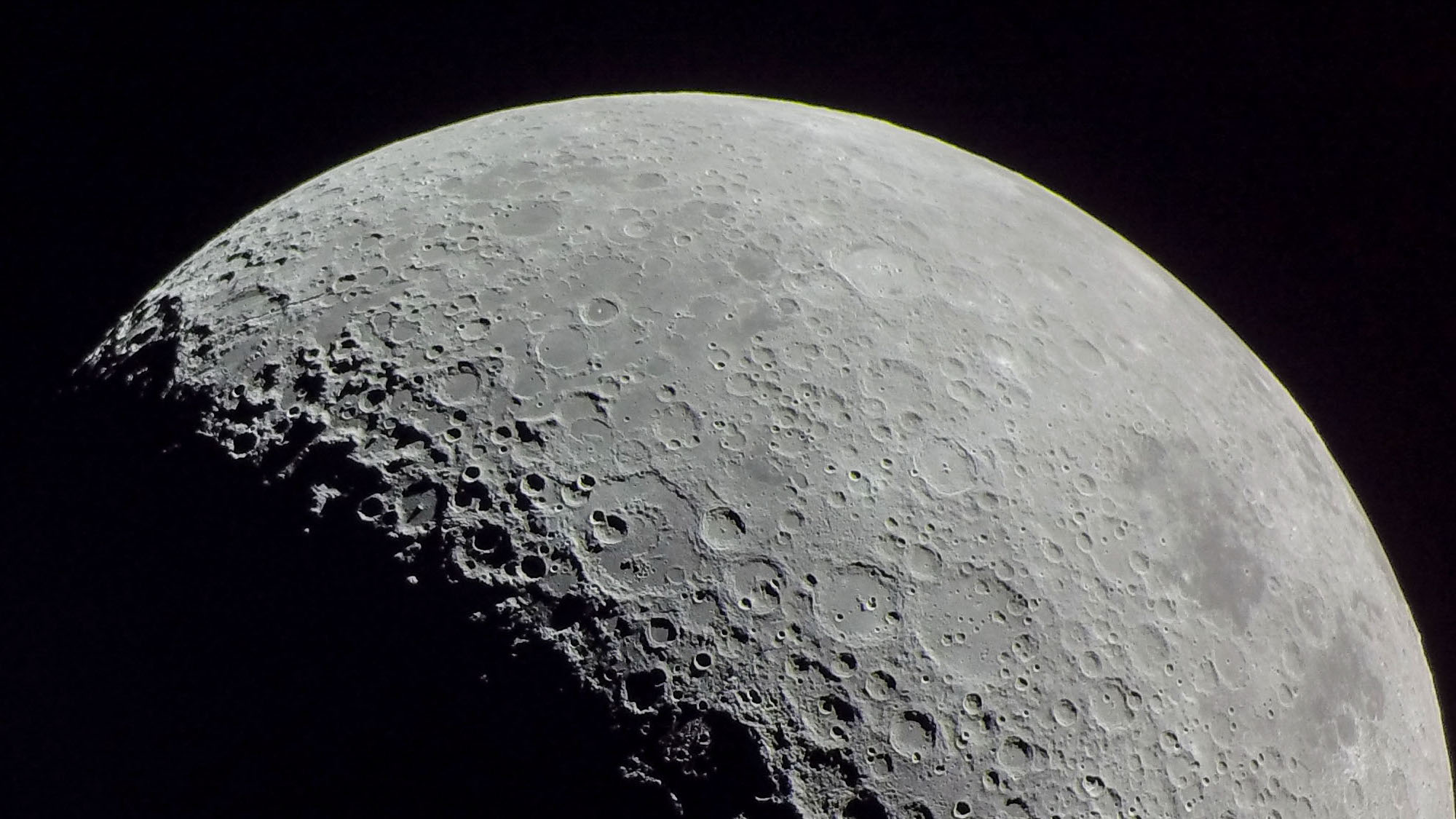

What happens to glass if you leave it out in the open for several billion years—but with no air and no running water? We can find the answers to that question by studying naturally occurring glass on the moon. The moon may lack the features that usually weather rocks or minerals on Earth, but that doesn’t make this satellite completely inert. Scientists know that prolonged exposure to radiation leaves a mark on the lunar surface. Now, new research suggests that billions of years of radiation exposure appear to stiffen lunar glass, according to a team who published their work yesterday in the journal Science Advances.
The moon may not seem like an obvious place to find glass. But tiny glass spheroids riddle the lunar regolith—the rock chips and other loose material covering the lunar surface. Meteoroids constantly bombard the material, melting it into tiny pools. As the molten regolith cools back down, it hardens into glass.
Glass is more than just a brittle, transparent sheet that fills windows. Scientists think of the stuff as the result of a liquid cooling rapidly without its atoms slotting into a defined structure. For that reason, some scientists consider glass to be its own separate state of matter.
And, even on the moon, glass does not last for billions of years without changing. Though the moon has neither a significant atmosphere nor running water to weather rocks like on Earth, the lunar surface is subject to something that our planet’s atmosphere typically filters out: radiation. Some of it comes from the sun; some arrives as cosmic rays from far greater distances. Regardless, over billions of years of radiation exposure, the effects build up.
[Related: Why do all these countries want to go to the moon right now?]
Geologists have long been interested in how radiation affects lunar soil. “There have been 20 years’ worth of study on it,” says Rhonda Stroud, a space materials scientist at Arizona State University, who was not an author of the paper.
Much of that work involved taking facsimiles of lunar soil, which they call simulants, and exposing them to radiation. But, Stroud says, it’s hard to know how individual material particles react by studying vast quantities of them. “Any one little dust particle or sub-millimeter glass sphere could have its own age,” she says. “Things get buried, the regolith churns.”

Fortunately, we have actual lunar glass on Earth in the form of samples returned by our moon missions. Most recently, we can thank the Chang’e-5 lunar lander, which lifted off from China in November 2020 and returned less than a month later bearing 3.81 lbs of souvenirs. Chang’e-5 did not land in a place on the moon that experienced many impacts—and, consequently did not return with much glass.
Still, scientists managed to sift through Chang’e-5’s bounty and pick out five particular glassy particles, each one about the width of a human hair. They examined each particle under a transmission electron microscope, allowing them to view its structure. They also pressed a tiny probe on each particle, allowing them to test how the particle reacted to force.
The researchers then “rejuvenated” the samples by heating them up to liquid temperatures of more than 1100 degrees F, holding them there for a minute, then letting them cool. They repeated the same microscope and pressure tests on the de-aged samples, allowing them to estimate what the particles looked like before hundreds of millions or even billions of years sitting on the moon and basking in radiation.
[Related: We finally have a detailed map of water on the moon]
They found a drastic change in a property that engineers call the Young’s modulus, which measures how much force a material needs to distort by a certain length. If the researchers’ rejuvenated samples were any indication, then prolonged radiation exposure increased the Young’s modulus of the glass by as much as 70 percent. More subtly, radiation also seemed to harden some of the particles.
These discoveries can help scientists figure out how glass behaves in the soil of other worlds. And the research team believes that it might also help us understand the behavior of the glass we make on Earth.
In fact, this paper’s authors believe that lunar glass itself may soon be useful. In their vision, moon-dwellers might sift through the lunar regolith for glass beads and convert them into glass that they could use for their vehicles or habitats.
But it is not obvious to everyone how research like this yet translates into actual infrastructure. “The radiation from solar wind is very, very slow,” Stroud says. “I don’t think we need materials to withstand billions of years.”
